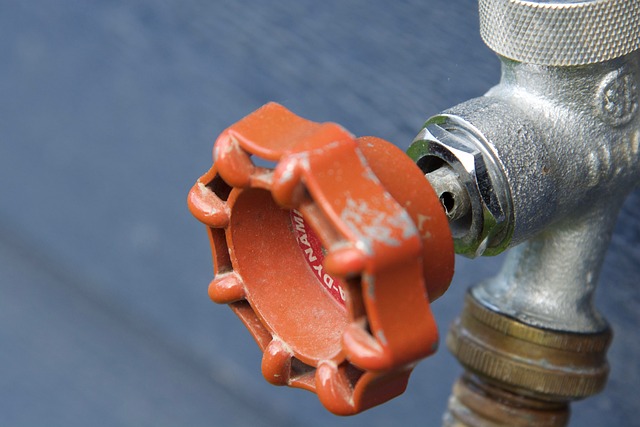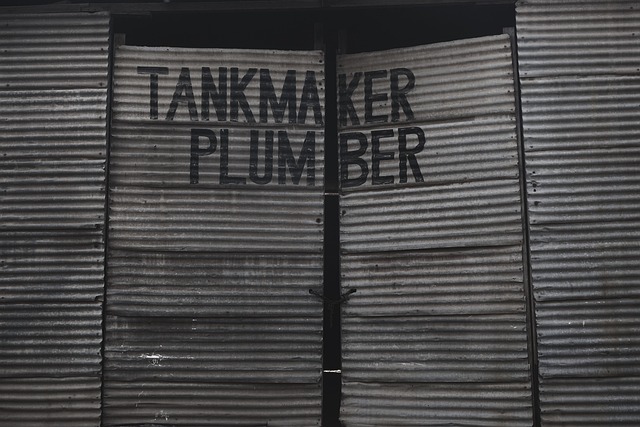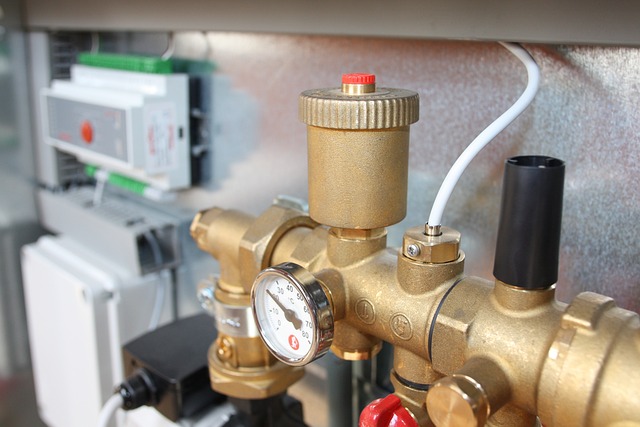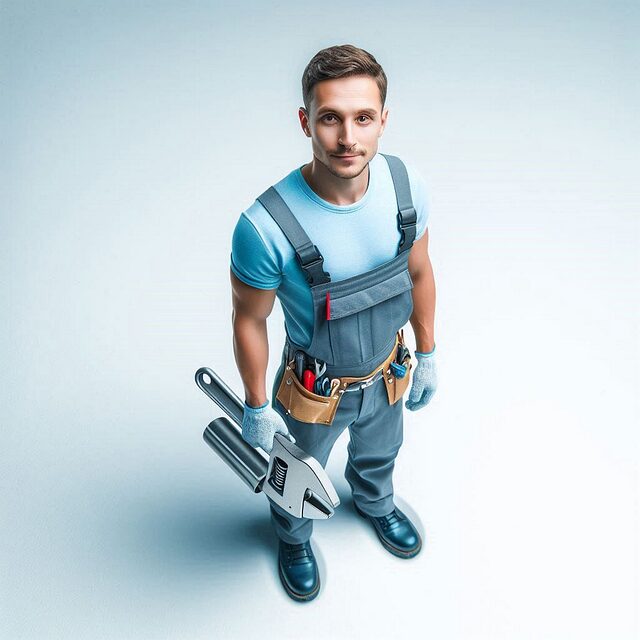When installing gas lines for stoves or heating systems, a skilled plumber is essential to ensure safety, adherence to building codes, and optimal performance. The plumber carefully plans the route to minimize disruptions, considering all safety aspects such as gas pressure, flow rates, and potential hazards. They select appropriate materials, secure connections with correct fittings, and conduct thorough testing for leaks using specialized equipment. After installation, the plumber ensures the system functions safely and efficiently, and performs inspections to pass local code requirements. This process is critical for preventing gas leaks, ensuring ventilation and detection systems are in place, and guaranteeing a long-lasting, dependable gas supply for your household appliances. Engaging a professional plumber for this task is key to maintaining safety and reliability in your home's gas supply system.
When integrating gas-powered stoves or heating systems into your home, professional gas line installation is paramount. This article demystifies the process, emphasizing the expertise of skilled plumbers and the critical steps to ensure a safe, efficient, and compliant gas supply. From planning the route to securing permits, and understanding the materials required, we guide you through each phase of installing gas lines. We’ll also explore best practices in gas piping, troubleshoot common issues, and provide maintenance tips to maintain your gas lines in optimal condition. With a focus on adherence to local codes and regulations, this resource ensures your appliances receive a reliable gas source while underscoring the significance of regular professional inspections for peace of mind. Whether you’re considering a single stove installation or a large heating system, this article serves as an authoritative guide to guarantee your home’s gas lines are installed correctly and safely.
- Understanding Gas Line Installation for Stoves and Heating Systems
- The Role of a Skilled Plumber in Gas Line Installation Projects
- Assessing Your Home's Needs for Safe and Efficient Gas Supply
- Step-by-Step Guide to Installing Gas Lines for Stoves
- – Planning the Route of the Gas Line
Understanding Gas Line Installation for Stoves and Heating Systems

When embarking on a project that involves installing gas lines for stoves or heating systems, it is imperative to approach the task with precision and expertise. A qualified plumber plays a pivotal role in this process, ensuring compliance with local building codes and safety standards. The intricacies of gas line installation encompass several key steps: initial planning, precise measurements, procurement of appropriate materials, and meticulous execution of the work. The plumber must assess the required gas flow for the stove or heating system, determine the optimal route for the gas line to minimize disruptions and maximize efficiency, and select the correct fittings and connectors to ensure a secure and leak-proof connection.
Safety is paramount in this endeavor; thus, the plumber must possess a thorough understanding of gas pressure requirements, the types of gas used by different appliances, and the potential risks involved with gas leaks or improper installation. Once the gas line is laid, the plumber conducts rigorous testing to confirm that there are no leaks and that the appliance functions correctly. This includes using specialized tools like gas leak detectors and pressure regulators to ensure the system operates safely and effectively. Engaging a professional plumber for gas line installation is not just about adhering to regulations or preventing mishaps; it’s about ensuring the reliability and longevity of your stove or heating system, thereby providing you with consistent and safe performance over time.
The Role of a Skilled Plumber in Gas Line Installation Projects

When embarking on a project that involves installing gas lines for stoves or heating systems, the expertise of a skilled plumber is indispensable. These professionals specialize in navigating the complex intricacies of gas line installation, ensuring that each connection and every valve is placed with precision and safety in mind. Their role goes beyond mere technical execution; it encompasses a comprehensive understanding of local building codes, safety regulations, and the optimal layout for efficient gas flow. A plumber’s proficiency in selecting appropriate materials and their ability to troubleshoot potential issues during the installation process are critical to the longevity and functionality of the gas lines. Their work lays the foundation for the safe operation of household appliances like stoves, ovens, and heating systems, providing homeowners with the reliability they need for everyday use. The importance of a plumber’s skill set in this specialized field cannot be overstated; their hands-on expertise is essential to delivering a project that is both compliant with safety standards and tailored to the specific needs of the property.
Assessing Your Home's Needs for Safe and Efficient Gas Supply

When upgrading or installing a gas line for stoves or heating systems in your home, it’s crucial to conduct a thorough assessment of your home’s specific needs to ensure a safe and efficient gas supply. A qualified plumber should perform this evaluation to determine the required gas pressure, flow rates, and pipe sizes that align with the appliance specifications and local building codes. This step is vital for preventing leaks and maintaining optimal performance, as well as for ensuring compliance with safety standards. The plumber will inspect existing gas lines, if any, and identify the most suitable locations for new line installations to minimize the risk of gas accumulation in unventilated areas. Additionally, they will assess the condition of your home’s current piping infrastructure to ascertain whether it needs upgrading or if it can support additional gas outlets without compromising safety or efficiency. Proper ventilation and detection systems should also be considered during this assessment to protect against potential gas leaks and ensure the longevity and reliability of your gas supply system. By taking these factors into account, you can rest assured that your home will receive a safe and efficient gas supply, with the added benefit of enhanced cooking and heating experiences for years to come.
Step-by-Step Guide to Installing Gas Lines for Stoves

When installing gas lines for stoves or heating systems, it is imperative to adhere to local building codes and safety standards. A certified plumber should be consulted or perform the installation to ensure both legal compliance and optimal functionality. The process begins with obtaining the necessary permits and includes shutting off the main gas supply for safety. Once the area is secure, a qualified professional will measure and mark the location for the new gas line, accounting for any obstructions and ensuring the path is straight and as direct as possible to minimize bends that could restrict gas flow.
Next, the plumber will excavate the route for the gas line, taking care to avoid any underground utilities to prevent service disruptions or potential hazards. After the trench is dug, the plumber lays down the gas pipe, securing it at regular intervals with clamps to prevent movement that could lead to leaks. The pipes are then connected to the gas source and the stove, using flareless adapters or threaded fittings as appropriate. Each connection must be leak-tested before backfilling the trench. Finally, the installation is inspected by a local inspector to confirm that it meets all safety and code requirements. This meticulous process ensures that the gas supply to your stove is both safe and reliable, allowing you to enjoy its use with confidence.
– Planning the Route of the Gas Line

When planning the route for new gas lines that will supply stoves or heating systems, it is imperative to engage the expertise of a skilled plumber. This professional will assess the property’s existing infrastructure and determine the most efficient and safe path for the gas line. Key considerations include minimizing disruptions to the structure, ensuring compliance with local building codes, and maintaining optimal functionality of the appliance while guaranteeing the safety of the occupants. The plumber will also take into account the proximity of the gas main to the point of use, the slope of the line for proper gas flow, and any potential obstructions that could necessitate rerouting or trenching. Proper planning by a licensed plumber is crucial to avoid future complications and to ensure a seamless integration of the gas supply with the intended appliance. This meticulous planning stage is where the foundation for a reliable and safe gas system is laid, and it typically involves obtaining necessary permits and coordinating with other contractors if the project scope requires it. By entrusting this task to a proficient plumber, homeowners and businesses can rest assured that their gas line installation will be handled with precision and care.
When addressing gas line installation for stoves or heating systems, it’s crucial to approach the task with careful planning and professional expertise. A plumber’s role is pivotal in ensuring the job is completed safely and efficiently, adhering to local codes and regulations. Homeowners must assess their specific needs to establish a reliable and well-routed gas supply that meets their requirements for cooking and heating. The step-by-step guide provided offers valuable insights into the process, emphasizing the importance of precision and safety at every stage. By understanding the fundamentals and utilizing the expertise of a skilled plumber, homeowners can confidently install gas lines, enhancing both their kitchens’ and homes’ functionality and comfort.
